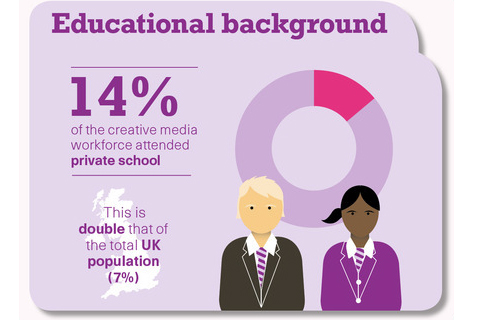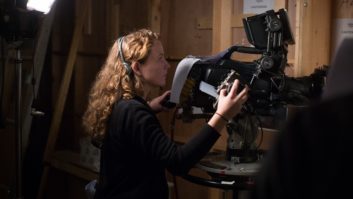
Creative Skillset, the industry training and skills body, has announced the results of its creative media workforce survey. It calls for fairer access to the TV, games, VFX, animation and wider creative media industries. Comprising over 1,100 respondents, the survey provides insight into the recruitment, working patterns, training needs, pay, and socio economic backgrounds of those working in the sectors.
The report found that the average income of the TV workforce is £38,800 (a rise of 7 per cent on 2010). Permanent staff earn on average £7,500 more than freelance workers, while women earn £2,250 less than men.
The survey also questioned respondents on the training paths they have taken into the industry. It found that over half (54 per cent) of the TV workforce found their current position through informal networks, and that unpaid work periods are still common in TV.
With only 2 per cent of the workforce having undertaken an apprenticeship, a lot more needs to be done to provide a visible range of paid career paths and opportunities for new talent to enter TV, the survey concludes. Of those already in the TV industry, half of all respondents had received any training in the 12 months prior to survey. Seventy-seven of freelancers – two fifths of the TV workforce – experienced barriers to training (compared to 55 per cent for permanent employees).
Creative Skillset chief executive Dinah Caine CBE said: “The evidence from the survey is clear. If our industries are to prosper, grow and reflect the markets they work in they need to up their game, open up paid entry routes and ensure that freelancers in particular are able to access affordable training and development. In addition we are urging companies to register on Hiive and post job opportunities that might otherwise have been limited to a chosen few.”
Nearly three quarters of respondents in TV (74 per cent) are educated to degree level, the highest level since the survey began and more than double the average for the wider UK working population. Of these, nearly half (45 per cent) are creative/media graduates, a figure that has more than trebled since 2003.
The survey found that the proportion of people with disabilities working in the industry has remained static at 5 per cent, less than half that of the UK working population (11 per cent). Fifteen per cent of respondents attended an independent/fee-paying school (versus 7 per cent for the UK population). Eight per cent of the TV workforce identified themselves as lesbian, gay or bisexual (versus 6 per cent for the UK population).
The TV workforce has an older age profile than the wider creative media workforce (64 per cent and 52 per cent respectively are aged 35+). This varies a little by TV sub-sector, with the terrestrial TV workforce having the oldest age profile (66 per cent are aged 35+), compared to 63 per cent of the cable and satellite TV workforce and 62 per cent of the independent production workforce.
The age profile of the TV workforce has remained fairly consistent since 2005. Prior to then the proportion of the TV workforce aged 35+ was considerably lower (46 per cent in 2003). The age profile of the TV workforce is also very similar to the UK working population, where 65 per cent of the workforce is aged 35+. Freelancers in the TV workforce (65 per cent) are slightly more likely than permanent staff (63 per cent) to be aged 35+.







